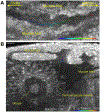Optical coherence tomography for dynamic investigation of mammalian reproductive processes
- PMID: 36574640
- PMCID: PMC9877170
- DOI: 10.1002/mrd.23665
Optical coherence tomography for dynamic investigation of mammalian reproductive processes
Abstract
The biological events associated with mammalian reproductive processes are highly dynamic and tightly regulated by molecular, genetic, and biomechanical factors. Implementation of live imaging in reproductive research is vital for the advancement of our understanding of normal reproductive physiology and for improving the management of reproductive disorders. Optical coherence tomography (OCT) is emerging as a promising tool for dynamic volumetric imaging of various reproductive processes in mice and other animal models. In this review, we summarize recent studies employing OCT-based approaches toward the investigation of reproductive processes in both, males and females. We describe how OCT can be applied to study structural features of the male reproductive system and sperm transport through the male reproductive tract. We review OCT applications for in vitro and dynamic in vivo imaging of the female reproductive system, staging and tracking of oocytes and embryos, and investigations of the oocyte/embryo transport through the oviduct. We describe how the functional OCT approach can be applied to the analysis of cilia dynamics within the male and female reproductive systems. We also discuss the areas of research, where OCT could find potential applications to progress our understanding of normal reproductive physiology and reproductive disorders.
Keywords: cilia; in vivo imaging; mouse; oocyte; optical coherence tomography; oviduct; spermatozoa.
© 2022 Wiley Periodicals LLC.
Conflict of interest statement
Conflict of Interests
The authors declare no conflicts of interest.
Figures




References
-
- Aprea I, Nothe-Menchen T, Dougherty GW, Raidt J, Loges NT, Kaiser T, Wallmeier J, Olbrich H, Strunker T, Kliesch S, Pennekamp P, & Omran H (2021). Motility of efferent duct cilia aids passage of sperm cells through the male reproductive system. Mol Hum Reprod, 27(3). 10.1093/molehr/gaab009 - DOI - PMC - PubMed
Publication types
MeSH terms
Grants and funding
LinkOut - more resources
Full Text Sources

